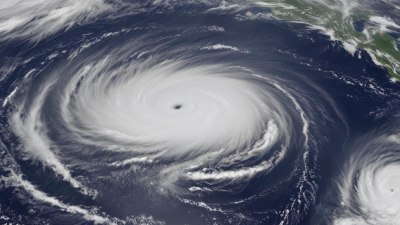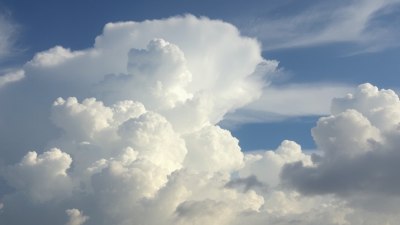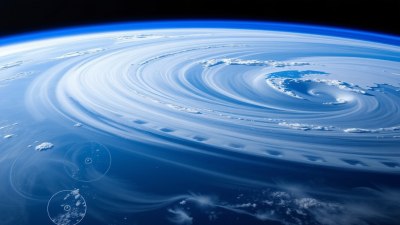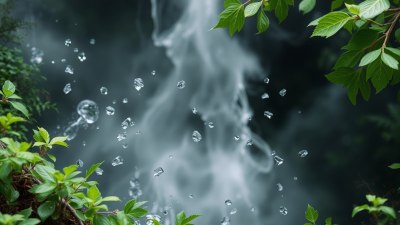How Hurricanes Lose Their Strength
Explore the processes that weaken hurricanes and the factors involved in their decay.

This image was created with the assistance of Freepik
Hurricanes, nature’s most powerful storms, can bring widespread destruction with their high winds, heavy rain, and storm surges. Understanding how these intense weather systems lose their strength is crucial for predicting their paths and impacts. There are several factors that contribute to the weakening of hurricanes, including environmental conditions, interactions with land, and the storm's internal dynamics.
Environmental Conditions
Environmental conditions play a significant role in a hurricane's lifecycle. One of the primary factors is the sea surface temperature (SST). Hurricanes thrive on warm waters; typically, they need sea surface temperatures of at least 26.5 degrees Celsius (about 80 degrees Fahrenheit) to maintain their strength. When they move over cooler waters, the lack of heat reduces their energy supply, leading to a gradual weakening of the storm.
Another critical factor is wind shear, which refers to the change in wind speed or direction with height in the atmosphere. High wind shear can disrupt the organization of a hurricane by tilting the storm's structure. When the upper-level winds are stronger than those at the surface, they can pull the top of the storm apart, making it difficult for the hurricane to sustain its vertical organization. This disruption can lead to a reduction in intensity.
Interaction with Land
When hurricanes make landfall, they encounter significant friction and loss of moisture, which contribute to rapid weakening. The interaction with land not only disrupts the storm’s circulation but also cuts off its access to the warm, moist air that fuels it. As hurricanes move inland, they often lose their tropical characteristics and can become extratropical. This transition involves the storm drawing energy from the temperature contrast between air masses instead of latent heat from the ocean.
The terrain can also play a role in a hurricane’s decline. Mountains can disrupt the flow of air around the storm, breaking apart its structure and causing further weakening. For instance, a hurricane moving into a mountainous region can dissipate quickly as it loses its organized center and energy source.
Moisture Content
Moisture in the surrounding atmosphere is crucial for hurricane development and maintenance. Hurricanes require a humid atmosphere to sustain their intensity. If a hurricane moves into an area with dry air, it can inhibit cloud formation and reduce the storm’s capacity to generate thunderstorms. This dry air can also lead to downdrafts that further disrupt the storm’s structure. Dehydration of the storm’s environment can therefore be a significant contributor to its weakening.
Internal Dynamics
The internal dynamics of a hurricane also contribute to its lifespan. A hurricane can naturally cycle through phases of intensification and weakening; this ebb and flow can be influenced by its internal heat engine—that is, the warm air rising and the cooler air sinking creates circulation patterns that are essential for the storm's functioning. As this heat engine falters, the storm can begin to weaken. Additionally, eye formation is critical. A well-defined eye and surrounding eyewall signify a healthy hurricane. As the eye becomes less distinct, or if the eyewall begins to erode due to various factors including wind shear or dry air, the storm will likely weaken.
Asymmetry
Asymmetry within the storm system can also lead to weakening. Hurricanes are typically symmetrical, but external factors can cause them to become asymmetric. This irregularity can lead to a distribution of winds and pressures that isn't conducive to sustained strength. For example, if a hurricane develops asymmetrically, with strong winds being only on one side and weaker winds on the other, this distribution can foster conditions that lead to a decrease in overall strength.
In summary, hurricanes are complex systems influenced by various environmental factors, including sea surface temperatures, wind shear, land interaction, moisture content, internal dynamics, and structural symmetry. Each of these aspects plays a crucial role in the lifecycle of a hurricane. Understanding how hurricanes lose their strength is important for meteorologists and scientists as they work to improve forecasting and mitigate the impacts of these potentially devastating storms.
Research continues to develop models that take into account these factors in order to provide better predictions. Effective communication of the potential impacts of hurricanes and their weaknesses is essential to prepare communities for the threat of these storms. With climate change affecting global temperatures and weather patterns, monitoring hurricanes and understanding their behavior is more important than ever.











